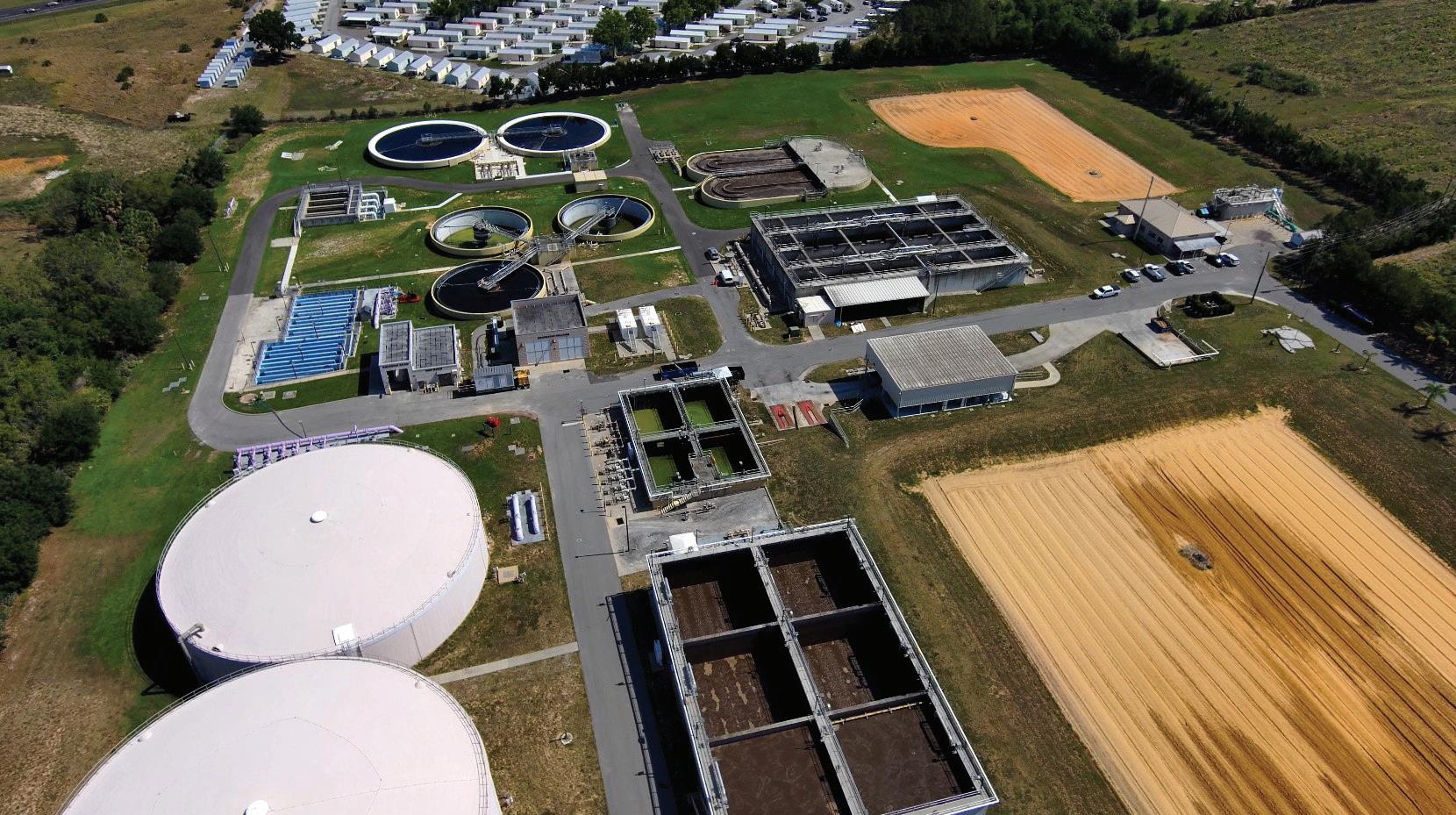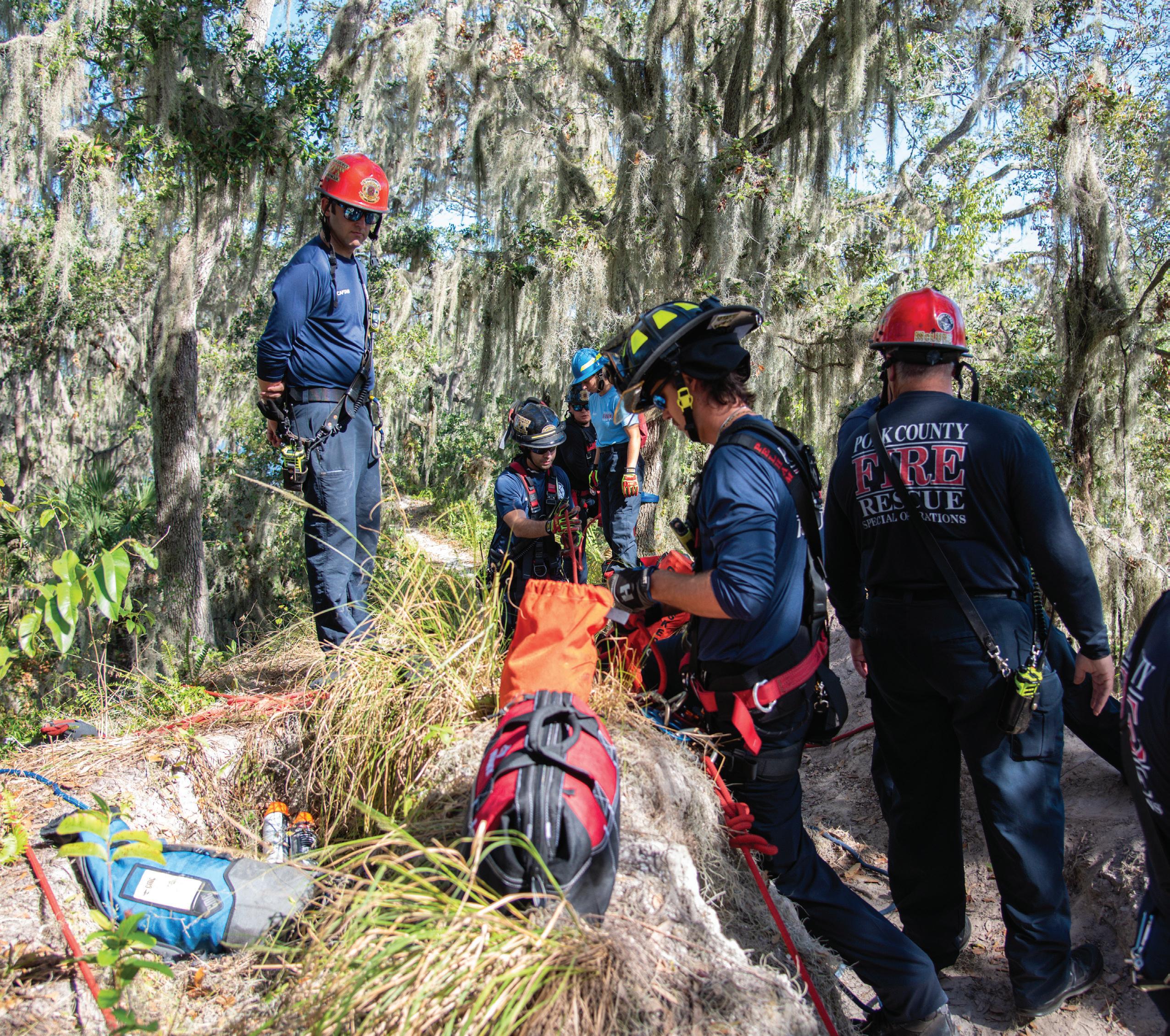
8 minute read
Market Spotlight Polk County CIP
Keeping Populous in Mind While Combatting Massive Growth
BY THOMAS EHLERS, STAFF WRITER
Nestled between two of Florida’s largest cities, Polk County is in the middle of a population boom. In the midst of this rapid growth, the county's distinctive Community Investment Program (CIP) is keeping citizens at the center as it helps facilitate the influx of people and business.
In 2023-24, Polk County represented the fastest-growing county in the U.S. after several years of being on the top-10 list. Growth has been the highest in the northeast segment of the county, the area closest to Orlando and Walt Disney World.
The Polk County Board of Commissioners approves the CIP on a five-year rolling basis, with each project budgeted across several years to reflect the necessary time and spread out the corresponding costs. This year’s CIP programming totals over $700 million, part of the larger near-$1.9 billion CIP for the current cycle.
While some jurisdictions refer to their CIPs as Capital Improvement Plans or Capital Improvement Projects, Polk County refers to their CIP as a Community Investment Program, reflecting the importance of its connection to its citizens.
Polk County Manager Bill Beasley outlined the approach the county uses to reach the public, which allows for more community input and comment on more public-facing projects, while more technical or less headline-driven projects rely on the county’s expertise.
Its Northeast Regional Wastewater Treatment Facility (NERWWTF) project exemplifies the latter. With rapid growth in the service area, the project will increase its permitting capacity from 6.0 to 9.0 million gallons per day (MGD), meeting projected wastewater demands beyond the 2040 planning horizon. The $120-125 million project is being executed in five phases – the first two have already been awarded at a cost around $70 million.

County leaders rely heavily on its seven division directors to know their needs and understand why they exist.
“I’m always challenging the divisions to think outside the box,” Beasley said. “Is there another way, a better way, an additional way to engage the public? We like to hear the good and the bad, but in the end, I think in Polk County, we are doing the right things for the right reasons in the right manner.
“People generally accept what it costs to do business in Polk County – (they ask if) the cost of government is acceptable to the people in Polk County who pay those taxes and fees. It sounds like certainly most do – that’s why they keep coming.”

PRIORITIZING SAFETY
Beasley indicated three primary drivers of growth in Polk County: quality education, affordability and, most importantly, a sense of public safety. The third is well represented in the CIP.
The Board of Commissioners identified $15 million to build a new fire training and rescue center. The new facility will include a burn tower structure and administrative office center for in-house training, while future plans include a burning vehicle and aircraft crash training protocols to simulate real-life calls. County officials traveled to states across the Southeast to investigate facilities and integrate their systems, such as carcinogen-limiting zones.
“(Polk County first responders) have been getting quality training, but I would argue it’s been in a less-than stellar facility,” Beasley said. “The idea that we will have in the next year a state-of-the-art training facility says a lot about how we’ve moved the needle and how we believe when you dial 911 in Polk County, we’re going to send the best trained people, the best equipped people with the best apparatus to answer that 911 call. And it takes training to do that.”
The training facility parallels similar investment into first responder facilities, as the county has completed eight new fire stations with another four or five scheduled in the coming years. In addition to replacing aged-out apparatuses, the county has invested into lake and river rescue units and tactical teams that coordinate with other first responders, like the Polk County Sheriff ’s Office (PCSO).
Additional safety projects include the construction of the PCSO K-9 Training Facility – a $1.4 million project – as well as the PCSO Burnham-McCall Training Center. The new training facility, which recently opened and cost just north of $7 million, features state-of-the-art classrooms, training simulators and physical training courses. The county is currently searching for a site to build a storage center for the PCSO for storing records, equipment and gear, and evidence property.
HITTING THE HIGHWAYS
There’s a bit of a balancing act when it comes to improving roadway conditions associated with growth, but Beasley and the county’s CIP initiatives strive to ease more highpriority problems.
Beasley gave the example of Ernie Caldwell Blvd – a roadway built some 15 years ago that travels over U.S. 27 to S.R. 72 – that caused initial consternation with citizens when it was initially pitched and completed. The stretch is now a critical passageway in the county.
“I feel really bad when we inconvenience and have to inconvenience the motoring public by way of lane closures, road closures, detours, all of those things,” Beasley said.
In total, $1.03 billion of the CIP’s five-year plan is pledged to road and drainage improvements, including Lake Wilson Road. The widening of a 1.1-mile stretch spanning from C.R. 532 to C.R. 54 came with a near $42 million cost, and while it might be a more extreme example, the project showcases the price tag that governments must work with to enhance roadways.
“When you add all of the costs associated with having to buy right-of-way, relocate utilities, potential wetland mitigation issues, the design and have to build it… it’s not uncommon to see a mile of road that has to be widened in an urban corridor to cost $20 million a mile,” Beasley said. “It is hugely expensive to be in the public roadway business.”
The C.R. 557 project will expand a near-six mile stretch two-lane road used as a reliever to U.S. 27 into a four-lane divided highway at a projected cost of $140-150 million. With design complete and bids to take place in the summer, the 2-3 years of construction through the wetlands is planned to begin shortly thereafter. The West Pipkin Road project – another two-lane to four-lane expansion – is planned to completely reopen in the next 60-90 days.
The Thompson Nursery Road project, an important East-West corridor that connects S.R. 17 with U.S. 27, is fully-funded and about to begin construction. A five-phase project, the internal phase three has already been completed due to a developer agreement, and bids are currently underway on the remaining portions of the estimated $150-170 million project.
During the 2023-24 fiscal year, additional projects included the completion of nearly 22,684 linear feet of sidewalks across the county and the preservation, reconstruction and rehabilitation of additional roadways across Polk County’s more than-2,500 mile inventory.
Polk County is larger than the entire state of Rhode Island and Delaware, and despite its size, it has to weigh which projects are more important and how to tackle the biggest needs.
“The county has probably 25-28 roadway projects independent of these that are needed but unfunded that are pushing a $2 billion deficit,” Beasley said. “I don’t have a sustainable funding source where I can do all of these projects. I only have incremental funding, and that’s when we prioritize roadways for that incremental funding.”
Despite the growing population, some citizen sentiments have helped absorb Polk’s expansion. In 2022, the citizens of Polk County voted to pass a land conservation property tax, which was first passed 18 years earlier and allows for the preservation of properties and purchase conservation easements. This mirrors a ballot initiative by voters to introduce a half-cent sales surtax for indigent healthcare, helping those who can’t afford healthcare plans.
That attitude towards helping others carries over to Beasley and those in the county office, as they seek solutions to the growing populace in Central Florida.
“That says a world about what the citizens of Polk County try to do to help others,” Beasley said. “It speaks volumes to the culture and the heart that exists in Polk County.”







